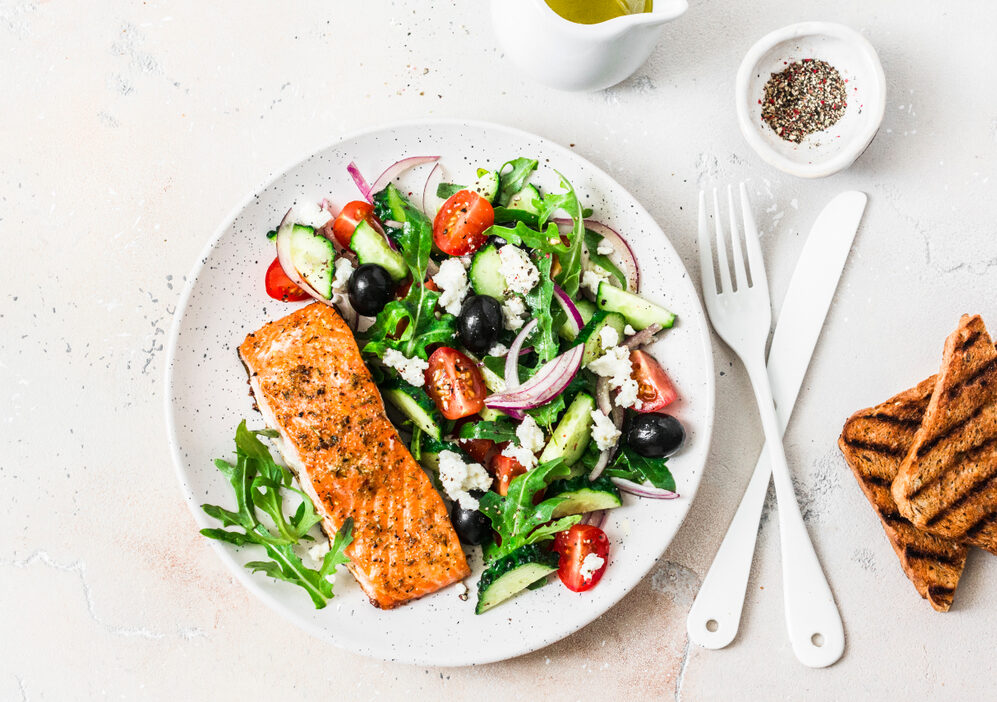In our last article, we went in-depth on the importance of fasting for at least 12 hours if you want to maintain your overall health and longevity. However, there’s another school of thought that says you must eat every 2 hours in order to maximize your gains and continue growing.
While many people think intermittent fasting and gaining muscle at the same time is impossible, and that you have to eat every 2-3 hours, that’s an extreme stance to take. There are merits to eating every 2-3 hours, but doing so and also fasting for 12 hours is definitely achievable.
Studies looking at what happens when we eat a meal found that protein synthesis peaks at around 1-2 hours after eating a meal, and your protein synthesis goes back down to fasting levels by hour 3.
Can You Get the Same Growth by Eating 3 Meals a Day?
The studies mentioned above suggest that eating every 2-3 hours is the way to go, and the literature does say that it can be beneficial for muscle growth. However, there are some issues with this approach.
The first issue is that if you eat every 2-3 hours, you’ll have to keep your meals much smaller; your calorie load is going to be extremely high if you’re eating six large meals a day. So people who follow this schedule typically eat smaller meals with increased frequency.

However, since many people are too busy to fit six meals a day into their schedule, they might eat their regular meal, then supplement with branched chain amino acids (BCAAs) two hours after they eat their meal, then not have another meal for another 4-5 hours.
This method allows you to mimic that six-meal protein synthesis response by having breakfast, lunch, and dinner with BCAAs between your meals instead of increasing your number of meals. But what if you’re trying to lose fat?
Can You Fast 12 Hours and Eat Every 2 Hours?
First of all, even if you’re in a mass phase, we still recommend intermittently fasting at least 5 days out of the week, which is definitely doable, and not as insane as you might be thinking. If you stop eating at 9PM, and then eat your breakfast at 9AM, you can then start your regular 2 hour feeding intervals.
If you’re more of an endomorph, you can do the above technique by eating 3 meals a day and supplementing with BCAAs 2 hours after a meal.
Can You Lose Fat and Maintain Your Muscles?

While the technique above is a great way to gain muscle when you’re in a mass phase, when you’re trying to lose fat, you need to manipulate your fasting period around that protein synthesis window. This is because your goal isn’t to gain muscle but to lose fat while maintaining the muscles you spent a lot of effort growing.
The first thing you need to do is lower your meal frequency while extending your intermittent fasting period. For example, try fasting for 16-hour periods; instead of eating at 9AM, eat your first meal at 1PM.
You’ll still be starting your fast at 9PM, but at this point you’ll be lowering your number of meals to two a day. You might only eat lunch and dinner and supplement with BCAAs between those meals, or try doing a modified intermittent fast.
Start off by having EAAs in the morning, then have your lunch, and then have your BCAAs in between, before finishing off with dinner. It’s a great way to reduce your calorie intake while increasing your fasting window, which studies show that will make you lose fat and maintain muscle.
Is It Safe to Fast 20-Hour Periods?
Studies show that it’s very difficult to gain muscle doing 20-hour fasts. You might actually lose muscle while attempting to do that. If your only goal is to lose body fat, it does work for this, but it’s not recommended.
If you really need to lose body fat and you want to fast for 20-hour periods, we recommend limiting 20-hour fasts to 1-2 days a week, and fasting for 16-hour periods for the rest of the week.
Essentially, the sky’s the limit when it comes to fasting. You can manipulate the frequency for muscle growth or fat loss. For muscle growth, opt for more, smaller meals or larger meals while taking BCAAs between them.
Or if you want to lose fat, opt for a longer fasting period, and incorporate cycling and periodizing throughout the year, just like you do with your training in order to get the best of both worlds.
We hope this article helped you understand the importance of eating every 2 hours, and how it’s doable while fasting for 12 hours.









